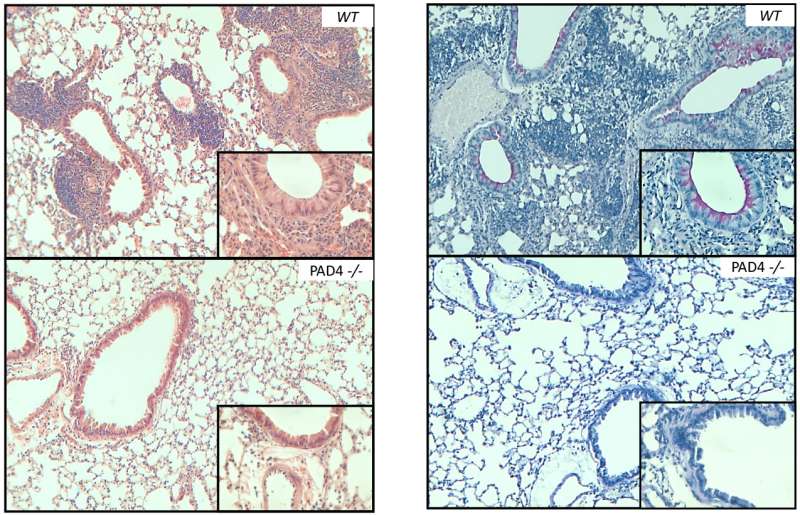A deeper look at severe asthma yields NET results

Of the more than 24 million people in the U.S. who have asthma, 10 percent have severe asthma—a form of the disease that does not respond to treatment. The immunological mechanisms underlying severe asthma and asthmatic lung inflammation are not well understood. A new study by investigators from Brigham and Women's Hospital published this week in Science Immunology models allergic lung inflammation and provides new insights into how asthma develops and progresses, with important implications for the most clinically advanced drugs designed to treat severe asthma.
"Asthmatic patients are not identical. Asthma genetics and clinical characterization of patients have provided evidence for differences that have profoundly affected our approach to clinical care," said corresponding author Bruce Levy, MD, chief of the Division of Pulmonary and Critical Care Medicine. "But we still have an incomplete understanding of the origins of asthma, and only limited information is available on long-term asthma prognosis. No therapies are available to cure asthma, and there remains much work to be done."
To model allergic lung inflammation in a dirty indoor environment, the team exposed a mouse model to a common environmental indoor allergen—house dust mite—as well as to endotoxin, a toxin released by bacterial cells. Exposure to both stimuli triggered complex lung inflammation, including a phenomenon known as lung NETosis.
In response to inflammatory triggers, white blood cells known as neutrophils form "neutrophil extracellular traps" (NETs). NETosis is the process by which NETs get activated and released. NETs can play a significant role in helping defend a host from invaders, but they can also cause organ injury and inflammation. Vital NETosis is a process in which neutrophils extrude their nuclear material, including DNA, to form NETs and then reseal their membranes to create cytoplasts—cells that lack a nucleus. Levy and colleagues found that in their model, NETosis and cytoplasts appeared to play a key role in triggering and amplifying an allergen-initiated neutrophilic immune response in lung inflammation.
In addition to studying animals, the team also examined samples of fluid from the lungs of human severe asthma patients, finding that a subset of patients had high neutrophil counts and detectable NETs and cytoplasts—important implications for how to design more precise clinical trials for severe asthma treatment.
Currently, clinical trials for new drugs to treat moderate and severe asthma do not stratify patients by neutrophil count or other important markers of inflammation. The team notes that markers of NETosis—including NETs and cytoplasts in sputum—may provide an opportunity to better tailor trials and treatments in subsets of asthma patients for future clinical research.
More information: N. Krishnamoorthy el al., "Neutrophil cytoplasts induce Th17 differentiation and skew inflammation toward neutrophilia in severe asthma," Science Immunology (2018). immunology.sciencemag.org/look … 6/sciimmunol.aao4747


















